What Is Yoga? Definition, Philosophy, Types, Benefits [2025]
Learn about what is Yoga. We will discuss the philosophy of yoga, the types of yoga, and the benefits of yoga.
Find out what this beautiful practice can do for you !
Hesitating between Pilates and Yoga ? Check my full explanation HERE

Yoga is an ancient form of practices and science that includes exercises and actions that concentrates on physical postures, breath control, meditation, and philosophical principles. It originated in India. The concept of yoga goes beyond mere exercise, it is an approach to health and well-being that combines mind, body, and spirit. Yoga promotes harmony and balance across every aspect of one’s life through the cultivation of strength, flexibility, inner peace, and self-awareness, through regular practice.
PLAN OF THE ARTICLE :
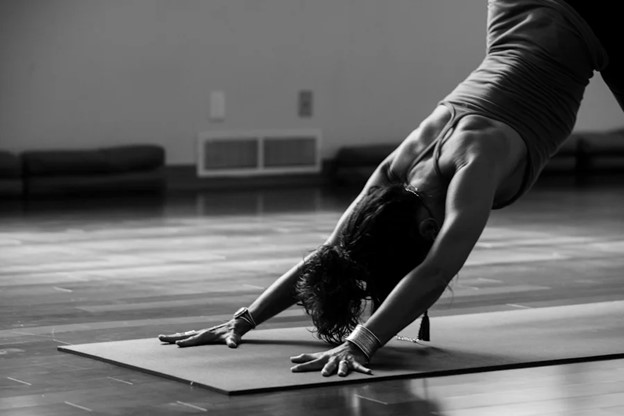
What is Yoga?
Yoga is a holistic discipline that encompasses physical, mental, and spiritual practices intended to cultivate well-being and harmony within. Yoga originated in ancient India and has evolved into a variety of styles and approaches, each of which offers unique benefits and experiences. Asanas (physical postures), breathing exercises (pranayama), meditation, and ethical principles are the pillars of yoga’s core message of integrating body, mind, and spirit.
Yoga promotes mindfulness, self-awareness, and compassion, resulting in a transformative journey of self-discovery and personal advancement. Yoga provides profound psychological and emotional benefits in addition to its physical benefits, allowing for the reduction of stress, the promotion of relaxation, and the improvement of mental clarity.
Yoga can be practiced for fitness, stress relief, or spiritual awakening, all of which can enhance an individual’s overall health and vitality, which can help them increase their sense of self-awareness.
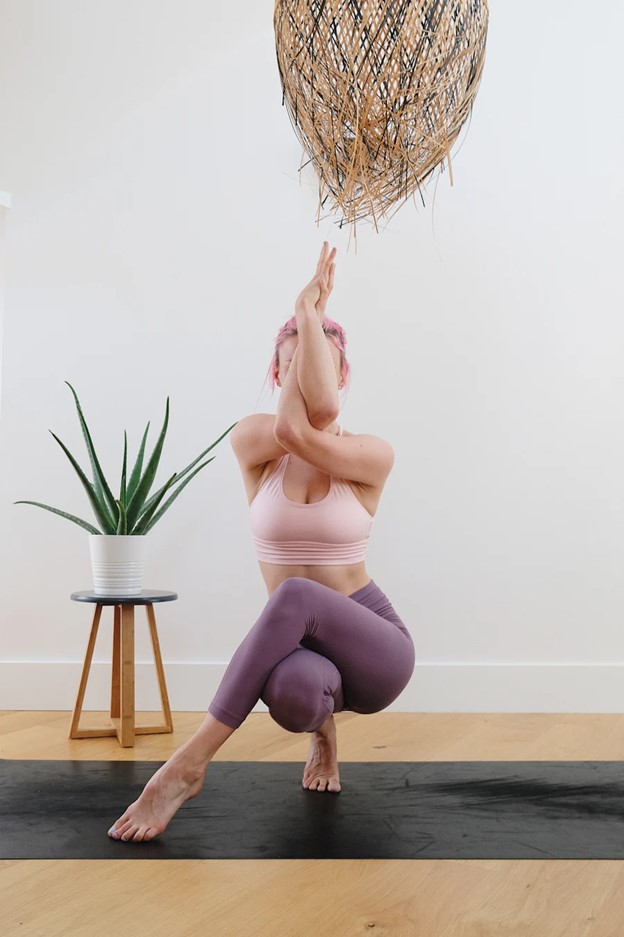
The Philosophy of Yoga
Yoga’s philosophy extends well beyond its physical postures. In Patanjali’s Yoga Sutras, the eight limbs of yoga illustrate a holistic approach to life. The Yamas and Niyamas of yoga encourage mental clarity, emotional stability, and spiritual awakening, resulting in a harmonious existence.
8 Limbs of Yoga
The 8 limbs of Yoga are a foundational aspect of classical yoga philosophy as outlined in the Yoga Sutras of Patanjali, a key text in the practice of yoga. These limbs serve as a guide for yogic practices that encompass physical, mental, and spiritual aspects of a practitioner’s journey towards good health and well-being.
1. Yama (ethical conduct):
This limb involves ethical guidelines and moral principles that yoga teachers often emphasize. It is a good idea to practice these principles in daily life to cultivate positive relationships with oneself and others. Non violence, truthfulness, non-stealing, moderation of senses, non-greed are the Yamas .
2. Niyama (duties towards ourselves ):
Niyama focuses on self-discipline and self-care practices that can benefit individuals with various health conditions, or give a structure in your life . It is important for individuals to maintain a regular yoga practice to enhance their overall well-being. Discipline, self study cleanliness, contentment, surrender to a higher power are the Niyamas .
3. Asana (physical poses):
Asana refers to the physical postures practiced in yoga, which can be beneficial for people of all ages and fitness levels. Different styles of yoga emphasize various types of poses, such as Warrior Poses, Sun Salutations, Forward Bends, and Hip Openers, to improve flexibility, strength, and overall fitness.
4. Pranayama (breath control):
Pranayama involves breathing techniques that can help regulate heart rate, reduce stress, and promote relaxation. It is recommended for individuals with anxiety disorders and high blood pressure to incorporate pranayama into their yoga practice for better stress management.

5. Pratyahara (withdrawal of the senses):
Pratyahara focuses on turning inward and disconnecting from external distractions, which can be beneficial for mental health and well-being. It encourages individuals to be present in the moment and cultivate mindfulness.
6. Dharana (concentration):
Dharana involves developing focus and concentration through meditation practices. Regular yoga practice can help improve mental clarity and enhance one’s yoga experience.
7. Dhyana (meditation):
Dhyana deepens the practice of meditation, promoting a sense of inner peace and spiritual connection. It is a core aspect of yoga philosophy and can have positive effects on mental health and overall well-being.
Want to try Transcendental meditation for free ? Check my full guide HERE
Want to try a Vipassana retreat ? Check my review of my 10 days Vipassana retreat HERE
8. Samadhi (state of enlightenment):
Samadhi represents the ultimate goal of yoga, a state of pure awareness and spiritual fulfillment. While advanced poses and yogic practices play a role in the yoga journey, the true purpose of yoga is to attain a state of union and harmony within oneself.
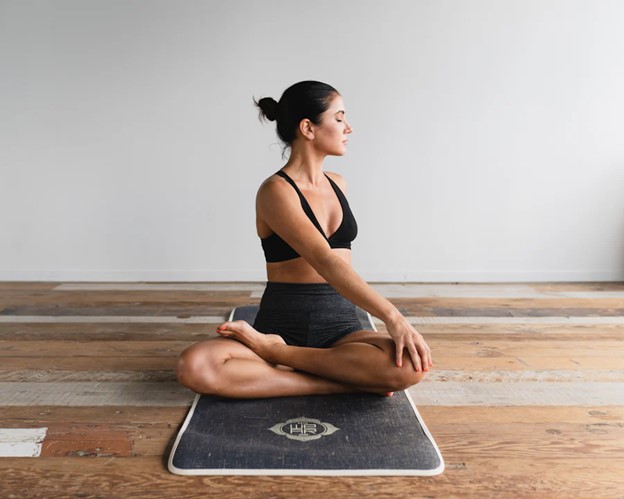
Types of Yoga
There is more than 50 types of Yoga … I just listed the main ones below
Yoga originated in ancient India and has evolved into many forms throughout the centuries, each offering different benefits for the mind, body, and spirit. Following is a brief overview of some of the most commonly practiced types of yoga in the modern day. There is more than 50 types of Yoga and those ones are the most common :
1. Hatha Yoga
A form of yoga in which physical postures (asanas) and breathing techniques (pranayama) are emphasized. A Hatha yoga class generally moves at a slow pace and is suitable for both beginners and experienced practitioners.
2. Vinyasa Yoga
Yoga Vinyasa is characterized by its fluid and dynamic movements. As the breath is synchronized with movement, it is called Vinyasa yoga. Asanas are combined seamlessly in Vinyasa classes, which provide students with a seamless transition between poses.
3. Ashtanga Yoga
The Ashtanga yoga practice follows a specific sequence of postures that must be practiced in a specific order. An intense physical form of yoga, this form emphasizes strength, flexibility, and stamina. Yoga classes involving Ashtanga often involve synchronized breathing and intense physical exertion.
4. Iyengar Yoga
Iyengar yoga was developed by B.K.S. Iyengar and emphasizes precision and alignment in each posture. Blocks, straps, and bolsters are common props used to assist students in achieving proper alignment and deepening their practice.
5. Bikram Yoga
The Bikram yoga practice also known as hot yoga involves 26 postures and two breathing exercises performed in a room at 105 degrees Fahrenheit (40 degrees Celsius). The heat is believed to aid in flexibility and detoxification, however, it is not suitable for everyone, particularly those who have a sensitive reaction to heat.
For a best practice, check our best hot Yoga clothing brands recommendations HERE
6. Kundalini Yoga
A Kundalini yoga practice involves physical postures, breathing techniques, chanting, and meditation to awaken the dormant energy of the spine. Yoga of awareness is often referred to as the ‘yoga of awareness’, which is intended to cultivate spiritual growth and self-awareness.

7. Restorative Yoga
Restorative yoga emphasizes relaxation and rejuvenation, as its name suggests. An instructor in a restorative yoga class uses props to support the body in gentle poses held for extended periods, which promotes deep relaxation and stress relief.
8. Yin Yoga
Yin yoga targets the connective tissues, including ligaments, tendons, and fascia, by focusing on passive and long-held postures. The practice complements more dynamic yoga by promoting flexibility and mobility in areas that are often neglected.
9. Yoga Nidra
Yoga Nidra is a meditative practice that induces deep relaxation and inner awareness. It is sometimes referred to as “yogic sleep.” Yoga practitioners lie down in a comfortable position and follow the instructor’s voice through different stages of consciousness as they journey through the various stages.
10. AcroYoga
AcroYoga combines yoga, acrobatics, and Thai massage into a playful and interactive workout. A couple works together to perform a series of poses and sequences, fostering trust, communication, and a sense of connection.
11. Jivamukti Yoga
Jivamukti yoga was founded by Sharon Gannon and David Life and combines spiritual teachings, music, and activism. Yoga classes usually incorporate vigorous asana sequences, chanting, meditation, and philosophical discussions designed to promote the development of self-awareness and compassion.
12. Power Yoga
The power yoga style derives from Ashtanga yoga and is dynamic and athletic. The fast-paced movement emphasizes strength, flexibility, and stamina. Classes in power yoga often incorporate aspects of Vinyasa flow, making them simultaneously challenging and inspiring.
13. Sivananda Yoga
Yoga as taught by Sivananda is characterized by a set sequence of 12 basic postures, as well as variations and relaxation postures. Yoga practices based on this traditional style are characterized by deep breathing, relaxation, and positive thinking.
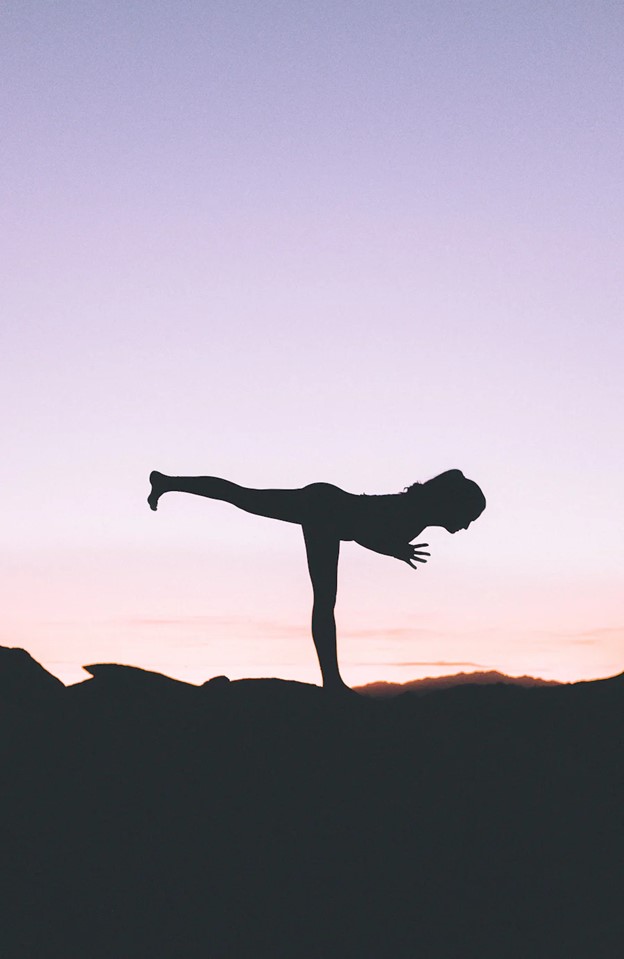
14. Anusara Yoga
Anusara yoga is characterized by its emphasis on alignment principles and heart-centered intention. This style was developed by John Friend to encourage practitioners to express themselves authentically but maintain proper alignment and balance at all times. The Anusara method is characterized by its creative sequencing as well as its uplifting philosophy.
15. Kripalu Yoga
Yoga at the Kripalu Center emphasizes self-discovery, self-acceptance, and mindfulness. Swami Kripalu was the inspiration for this gentle and introspective method of yoga, in which practitioners are encouraged to listen to their bodies and recognize and respect their limitations.
Yoga classes at Kripalu generally begin with gentle warm-up exercises, progress through dynamic asana sequences, and conclude with deep relaxation and meditation.
16. Hot Yoga
A heated room is used to practice hot yoga to enhance flexibility, detoxify, and increase cardiovascular endurance.
Check our article about Hot Yoga HERE
17. Bhakti Yoga
In Bhakti yoga, devotion is cultivated through chants, prayers, and rituals, which cultivate love, surrender, and reverence for the divine.
18. Raja Yoga
Meditation, concentration, and ethical principles are principles that are used in Raja yoga to attain spiritual enlightenment and self-realization.
19. Tantra Yoga
The practice of Tantra yoga incorporates physical training, meditation, and ritual to open the mind, awaken Kundalini energy, and deepen the connection between the individual and the divine.
20. Doga (Yoga with Dogs)
The concept of doga promotes the bonding, relaxation, and playful interaction between humans and dogs by engaging them in yoga poses together.
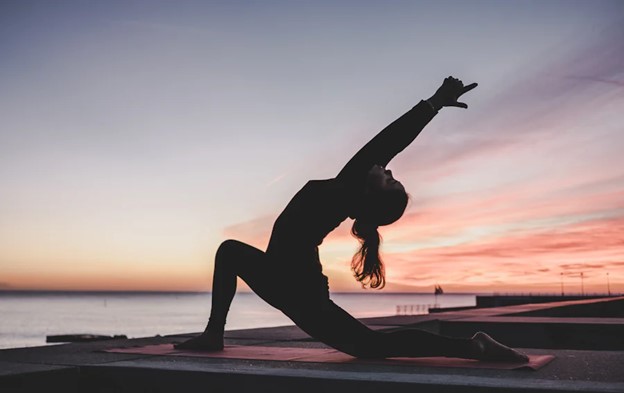
Benefits Of Yoga
Yoga has numerous health benefits and is beneficial for the physical, mental, and emotional well-being of the individual. A few of the key benefits of this program are as follows:
✔️ Improves Flexibility:
Yoga poses gently extend and lengthen muscles, ligaments, and tendons, resulting in improved flexibility and range of motion.
✔️ Increases Strength:
Yoga poses require the engagement and retention of muscles, which increases strength, particularly in the core, arms, legs, and back.
✔️ Enhances Balance and Stability:
Yoga poses that emphasize balance and stability is beneficial for improving proprioception and coordination.
✔️ Promotes Stress Reduction:
Yoga practices such as meditation and mindful breathing promote relaxation in the body which reduces stress levels and promotes a sense of calmness.

✔️ Boosts Mental Clarity:
Yoga encourages mindfulness and present-moment awareness, leading to increased mental clarity, focus, and concentration.
✔️ Supports Emotional Well-being:
Yoga provides a safe space for self-exploration and emotional release, helping to alleviate symptoms of anxiety, depression, and other mood disorders.
✔️ Aids in Pain Management:
Yoga improves posture and mobility, as well as body awareness, which can alleviate chronic pain conditions such as back pain, arthritis, and migraines.
✔️ Improves Respiratory Function:
Yogic breathing exercises, or pranayama, enhance lung capacity, increase oxygenation of the blood, and improve overall respiratory function.
✔️ Boosts Immune Function:
Yoga stimulates the lymphatic system, which helps to eliminate toxins from the body and strengthens the immune system, reducing the risk of illness and infection.

✔️ Promotes Better Sleep:
Yoga can be practiced before going to sleep to help relax the body and mind, leading to a more restful and productive night’s sleep.
✔️ Enhances Digestive Health:
Some yoga poses and breathing exercises promote digestion, relieve digestive discomfort, and assist in maintaining regularity in the digestive system.
✔️ Increases Energy Levels:
Yoga practice helps to release tension and blockages in the body, leading to increased energy flow and vitality throughout the day.
✔️ Fosters Mind-Body Connection:
Yoga encourages a deeper connection between the mind and body, fostering a sense of wholeness, integration, and self-awareness.
✔️ Supports Weight Management:
Yoga practice can help to regulate appetite, encourage mindful eating habits, and improve a person’s ability to manage their weight effectively.
✔️ Promotes Heart Health:
Yoga has been shown to lower blood pressure, reduce cholesterol levels, and improve cardiovascular function, supporting heart health and reducing the risk of heart disease.
Yoga’s transformative power demonstrates how it enhances the health, vitality, and well-being of practitioners of all ages and abilities.
Get yourself a ritual before your Yoga :
- – Burn some sage to prepare your practice
- – Say some mantras for positive results on your life

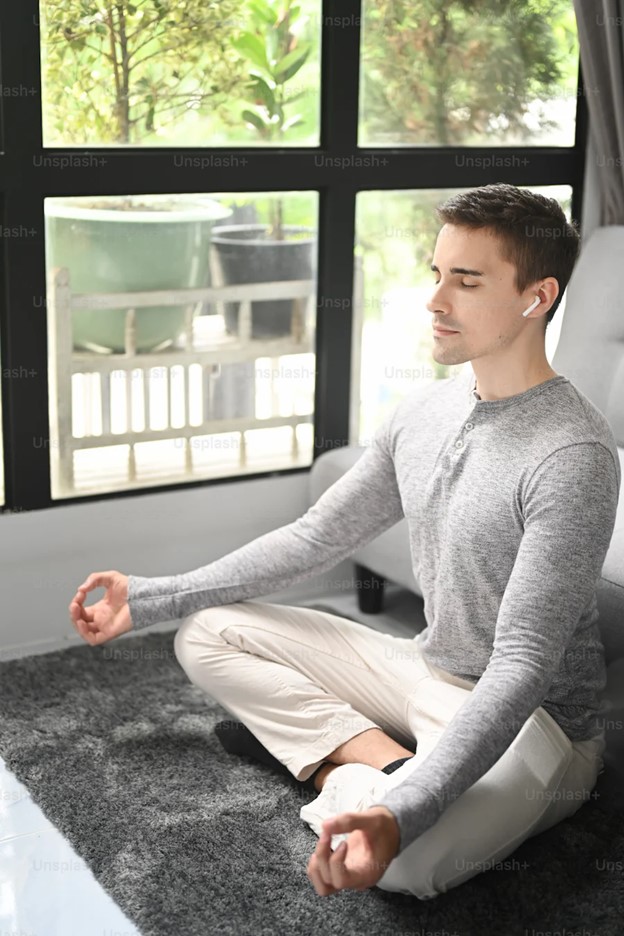
Negative effects of Yoga
Yoga is highly beneficial. However, if you don’t practice correctly, it could have some negative effect ( pretty rare ) . Always follow instructions of a teacher and consult a health professional.
1. Soreness and Pain
A yoga practice, particularly if you are new to it, may sometimes result in muscle pain and discomfort, particularly if you engage in challenging poses. Known as delayed onset muscle soreness (DOMS), this soreness generally occurs within 24 to 48 hours following exercise and is a normal physiological reaction. It is possible, however, that excessive soreness or persistent pain during practice is a sign of overexertion or improper alignment.
2. Muscle Injuries
There is no doubt that yoga is a low-impact exercise, but some poses or movements can place strain on muscles, ligaments, and joints, increasing the risk of muscle injuries such as strains, sprains, or pulls.
These injuries can occur when poses are performed incorrectly, with excessive force, or without a proper warm-up and preparation. A qualified instructor can guide how to avoid muscle injuries by listening to your body’s signals and modifying poses as needed.
3. Fatigue
Yoga practice, particularly vigorous or intensive styles, can leave practitioners feeling fatigued or drained, especially if adequate rest and recovery are not prioritized. The practice of overtraining or pushing oneself too hard without sufficient rest can cause physical and mental fatigue as well as a decrease in motivation and an increase in the risk of injury.
The best way to prevent burnout and promote overall well-being is to balance yoga practice with restorative activities, such as restorative yoga, meditation, or relaxation techniques.
Need to release emotions :
Try my hips opening poses HERE

What is Yoga Good For ?
The benefits of yoga are numerous, enhancing many aspects of health and well-being.
✔️ Sense of Balance:
Yoga cultivates physical and mental balance through a combination of physical postures and mindful movement. The practice enhances stability and coordination, allowing individuals to navigate life with greater ease and poise.
✔️ Quality of Life:
The practice of yoga has a profound effect on the quality of one’s life. A positive attitude facilitates physical health, emotional well-being, and spiritual fulfillment, enhancing vitality, joy, and purpose in one’s life.
✔️ Nervous System:
The practice of yoga, such as deep breathing, meditation, and relaxation techniques, has a beneficial effect on the nervous system, assisting in reducing stress, calming the mind, and promoting relaxation and rejuvenation.
✔️ Body Awareness:
A major benefit of yoga is that it fosters an awareness of the body’s sensations, movements, and alignment. A heightened sense of awareness leads to an improvement in posture, movement patterns, and self-care practices, which will in turn improve physical health and well-being.
✔️ Ancient Practice:
Yoga is rooted in ancient wisdom and tradition, and its timeless teachings and practices have endured throughout time. A holistic approach to wellness and self-realization, yoga bridges the gap between old wisdom and modern lifestyles by drawing on centuries-old techniques and philosophies.
✔️ Ancient Practice:
Yoga is rooted in ancient wisdom and tradition, and its timeless teachings and practices have endured throughout time. A holistic approach to wellness and self-realization, yoga bridges the gap between old wisdom and modern lifestyles by drawing on centuries-old techniques and philosophies.
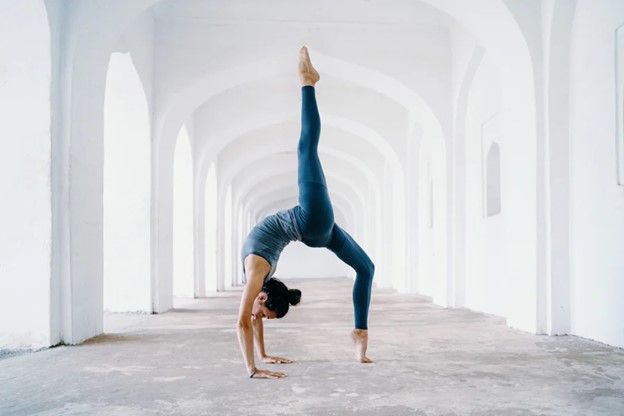
FAQs
✔️ Is yoga a form of exercise?
Yes, yoga involves a wide variety of exercises that can be used to promote strength, flexibility, and balance. A yoga practice, however, is much more than just a physical activity. Yoga integrates mind, body, and spirit to provide holistic well-being.
Yoga can be really helpful before or after a intense physical exercise or a long hike too ( check our guide HERE )
✔️ Can yoga help with stress relief?
Yoga is renowned for its stress-relieving properties, providing a haven of calm amid the chaos of everyday life. A yoga practice provides tools for managing stress and promoting relaxation through mindful movement, breath awareness, and meditation.
✔️ Can anyone practice yoga?
Yes, yoga is a form of exercise that is suitable for individuals of all ages, fitness levels, and body types. Yoga is a practice for everyone, regardless of whether you are a beginner or an experienced practitioner.
✔️ Is yoga a good workout?
Yes, yoga is a great way to exercise both your body and mind. A regular exercise program strengthens and tones muscles, improves flexibility and balance, and contributes to overall fitness. Additionally, it provides a relaxing and stress-relieving effect.
✔️ Is yoga safe during pregnancy?
Yes, yoga can be a safe and beneficial practice while pregnant, but it is essential to practice under the guidance of a qualified instructor. Yoga classes designed specifically for pregnant women, which incorporate gentle stretches, breathing exercises, and relaxation techniques, are available.
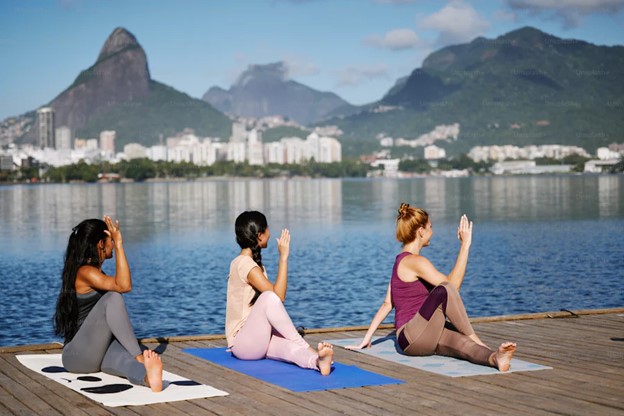
➡️ I am a Yoga teacher, meditator and wellness professional . I wrote many articles about well being, retreats, Yoga and spirituality :
– How to practice transcendental meditation
And way more ! Check it out on our website . Just type search bar 🔍 with the topic you want to explore
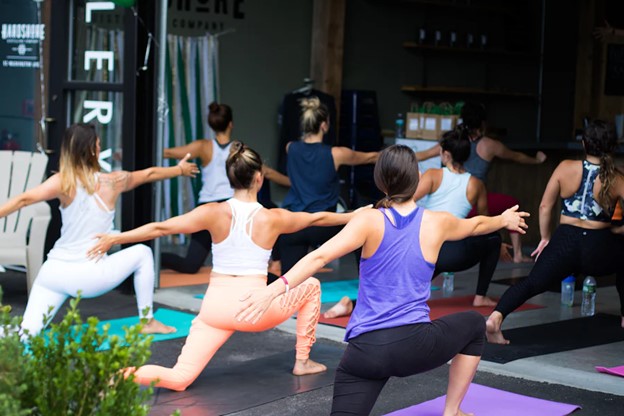
Conclusion
You can experience the profound benefits of yoga for your mind, body, and spirit when you embark on a transformative yoga practice. Yoga is a pathway to holistic well-being, self-discovery, and mental clarity regardless of whether your focus is on fitness, mental clarity, or spiritual growth. Lead a balanced, vital, and peaceful life by embracing the practice with open-heartedness and mindfulness.
Yoga Alliance, a well-known organization in the United States and in the world , sets standards for yoga teachers and yoga studios, promoting good health practices and ensuring that instructors are qualified to guide students in their yoga program. Numerous research studies have highlighted the benefits of yoga for various health conditions, including chronic conditions, preventive medicine, lower back pain, weight loss, and mental health.
It is recommended for individuals to consult with their health care provider before starting a new yoga program, especially if they have specific health concerns or are older adults. By practicing yoga regularly and exploring different styles and yoga asanas, individuals can experience the positive effects of yoga on their physical body, mental health, and overall well-being.

WHO AM I ?
Hello !
I am Eric, a French Australian citizen based between Australia, Asia and Bali and I love to travel and experience the world. I generally like outdoor activities, wellness, great food and venues , party and real local adventures ! I am a Yoga practitioner and fitness lover
I created this blog because I love to travel and I want to share my experiences with others. I’ve been traveling since I was a child, and I’ve been to over 50 countries. I’ve seen some amazing things and met some amazing people, and I want to help others experience the same things.
I believe that travel is one of the best ways to learn about the world and about yourself. When you travel, you’re forced to step outside of your comfort zone and experience new things. You learn about different cultures, different religions, and different ways of life. You also learn about yourself, your strengths, and your weaknesses.
Travel can also be a great way to make new friends. When you’re traveling, you’re surrounded by people from all over the world, and you’re all in the same boat. You’re all there to explore and experience new things, and that can create a bond between people.
Let’s connect together !
I hope that my travel blog will inspire others to travel and to see the world. I also hope that it will help people to learn about different cultures and to become more open-minded.


![70 Daily Best Positive Affirmations for Men [2025]](https://funkyfreshtravels.com/wp-content/uploads/2024/05/Picture1-31.jpg)



![Best Hiking Stretches [ Yoga Teacher Tips ]](https://funkyfreshtravels.com/wp-content/uploads/2024/05/Picture1-34.jpg)